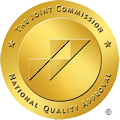Bipolar disorder is a much more prevalent mental illness than most people realize. There is about 2.8% of individuals struggling with bipolar disorder, that is 7 million people in total.
But while bipolar disorder is a highly misunderstood mental disorder, it is also unique in how it is affected by addiction and addictive substances. Certain substances can also cause reactions similar to bipolar disorder once it reaches the level of addiction. Those who suffer from both addiction and bipolar disorder have to take extra care to treat both conditions knowing this level of interactivity.
What is The Connection Between
Bipolar Disorder and Addiction?
Individuals with bipolar disorder may be more susceptible to developing substance use disorders. This is due to the nature of the mental illness itself, such as the urge to self-medicate, impulsivity, and seeking relief from mood symptoms. Substance abuse can exacerbate bipolar symptoms, trigger mood episodes, and interfere with the effectiveness of mood-stabilizing medications.
Substance use can also induce mood swings, even in people who don’t suffer from bipolar disorder. However, it can increase the risk of developing bipolar disorder in individuals predisposed to the condition. A dual diagnosis of bipolar disorder and addiction requires specialized treatment that addresses both conditions simultaneously to achieve optimal outcomes and reduce the risk of relapse.
Substance-induced bipolar disorder refers to a set of symptoms that resemble bipolar disorder, but are directly caused by the use or withdrawal of substances. These can include alcohol, prescription drugs, or illegal drugs. An imbalance of these substances can trigger manic, hypomanic, or depressive episodes in individuals who do not typically have bipolar disorder. They can also exacerbate symptoms in those who already have the condition.
Symptoms of substance-induced bipolar disorder may include mood swings, impulsivity, increased energy, agitation, and changes in sleep patterns. Diagnosis requires careful assessment to distinguish substance-induced symptoms from primary bipolar disorder. Effective treatment involves addressing the substance use or withdrawal (typically including a period of medical detox), along with appropriate management of bipolar symptoms using medications and psychotherapy.
It’s estimated that about 60% of all people with bipolar disorder have reported some history of substance abuse disorder. This doesn’t guarantee that someone with the disorder will develop a substance use disorder, but those with the disorder should be extra cautious about developing an addiction when using intoxicating substances.
Understanding
Bipolar Disorder
Bipolar disorder is often highly misunderstood, and often written off as someone acting in a chaotic manner. The diagnosed person’s behavior may seem mysterious or chaotic to someone who doesn’t have bipolar disorder. But there are distinct symptoms, and it is manageable with work and diligence.
Bipolar disorder is a mental health condition characterized by extreme mood swings that include episodes of mania or hypomania and depression. During manic or hypomanic episodes, they may experience increased energy, reduced need for sleep, elevated mood, and a propensity for risky behavior (among other symptoms).
In contrast, depressive episodes are marked by persistent feelings of sadness, hopelessness, fatigue, and loss of interest or pleasure in activities. They may also have thoughts of death or suicide.
These mood episodes can vary in duration and severity, and individuals with bipolar disorder may also experience periods of stable mood between episodes. The disorder can significantly impact daily functioning, relationships, and the person’s overall quality of life if left untreated.
There are two different forms of bipolar disorder, mainly differentiated by how symptoms present themselves. Both types of bipolar disorder can significantly impact mood, energy levels, and daily functioning, but they differ in the severity and duration of manic symptoms.
Bipolar I disorder is characterized by manic episodes that last for at least one week, or severe manic symptoms that require immediate hospitalization. These manic episodes may be accompanied by depressive episodes. However, a person with bipolar I may not necessarily experience depressive episodes.
In contrast, bipolar II disorder involves periods of hypomania, which is a less severe form of mania that lasts for at least four days. They will also experience depressive episodes. Unlike bipolar I, bipolar II does not involve full-blown manic episodes.
Bipolar disorder is typically diagnosed through a combination of clinical assessment, medical history evaluation, and psychological testing. A healthcare provider will conduct a thorough interview to assess symptoms, mood fluctuations, and behavioral patterns. They may also use standardized psychiatric rating scales and may order laboratory tests or imaging studies to rule out other medical conditions.
The diagnostic criteria for Bipolar I center on the presence of manic episodes, if they occur for a week or longer if they require hospitalization, and if they include at least three to four of the following symptoms:
- Decreased need for sleep
- High distractibility
- Racing thoughts or ideas
- Excessive involvement in activities that may lead to self-destruction, such as dangerous sexual activities or compulsive shopping
- Compulsion to keep talking
- Grandiosity or heightened sense of self-esteem
- Increase of goal-centered activity or psychomotor agitation (no goal attached)
The diagnostic criteria for Bipolar II centers on hypomanic episodes, and whether they’re followed by a depressive episode (and not a manic episode), last for at least four days, and include at least four of the previous symptoms.
It’s essential to consult a mental health professional for accurate diagnosis and appropriate treatment planning. An official diagnosis is based on specific criteria in the Diagnostic and Statistical Manual of Mental Disorders (DSM-5) published by the American Psychiatric Association. Symptoms will likely need to be tracked over a period of time before a diagnosis is achieved.
How to Support Someone
With Bipolar Disorder
Supporting someone with bipolar disorder involves educating yourself about the condition, being understanding and patient, and offering consistent emotional support. It may be frustrating at times. However, bipolar disorder is a difficult mental illness to manage, and all emotional support is helpful.
Someone with bipolar disorder will (ideally) work with a mental health professional to create a treatment plan to aid in the management of their disease. This may include taking prescribed medications and attending therapy sessions. It may feel like a lot of work, which is why encouraging the person in your life with bipolar disorder to stick with it may go a long way. You can also help them by encouraging them to maintain a healthy lifestyle with regular sleep, exercise, and a balanced diet.
It’s important to practice active and non-judgmental listening when it comes to bipolar disorder. People with this disorder often fear judgment, and so may not open up about their experiences. But communication is in fact essential for managing the symptoms of bipolar disorder. Encourage open communication about mood changes, triggers, and early warning signs of manic or depressive episodes.
People with bipolar may still experience mood swings or may experience them while changing medications or developing a new routine. It’s important to encourage open communication and emphasize that there is no shame in asking for help. Depending on their needs, it’s important to discuss medication side effects and how to help them seek emergency medical care or enter residential treatment.
Many people with bipolar disorder don’t seek out any mental health assistance. This can be out of fear of judgment, dread of taking medication, or the stigma of having a mental illness that requires upkeep. But it’s important that they keep seeking out help specially geared toward bipolar disorder.
Treatment for
Bipolar Disorder and Addiction
Treating bipolar disorder and addiction as a dual diagnosis typically involves an integrated approach that addresses both conditions simultaneously. Treatment may include a combination of medication management, individual therapy, and substance abuse counseling. Mood stabilizers, antipsychotic medications, or antidepressants may be prescribed to manage bipolar symptoms, with other medications sometimes added to their routine to treat addiction.
Cognitive-behavioral therapy (CBT), dialectical behavior therapy (DBT), and motivational interviewing are commonly used therapeutic approaches to help individuals develop coping skills. Support groups and relapse prevention programs can also be beneficial in maintaining recovery and managing bipolar symptoms. Caring for someone with a dual diagnosis can involve a multidisciplinary team of healthcare providers and mental health specialists.
California Addiction Treatment Offers
Dual Diagnosis Treatment
For people suffering from both bipolar disorder and addiction, there is hope for a peaceful future. California Addiction Treatment offers dual diagnosis treatment specifically designed to address the interactions between substance use disorder and mental illness. Evidence-based treatments, in combination with support groups and medication management, ensure that individuals will feel supported at every stage of recovery. Contact us today to begin learning how to heal and manage your dual diagnosis.

Dr. Deena Manion LCSW #20628, a Doctor of Psychology and Licensed Clinical Social Worker since 1993, is the Co-Founder of California Addiction Treatment Center. She brings extensive experience in addiction and mental health from her previous roles at prominent recovery centers and her private practice in Los Angeles and Agoura Hills, CA. Dr. Deena has also appeared as an expert on Dr. Phil’s show and podcast, as well as various other TV programs and documentaries, sharing her expertise in mental health and addiction. Her goal is to leverage her clinical skills in the entertainment industry to reach a wider audience, making her a valuable asset in the field.



